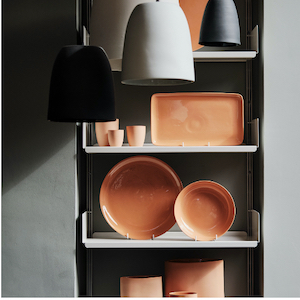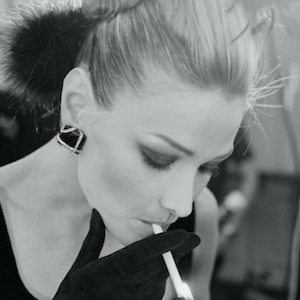Irregular Kate Moss
By Jo Phillips
Probably the most photographed super model ever, she has been painted by British artist Banksy, Julien Opie and Lucien Frued as well as been cast in gold by , now the living icon and modern muse has been literally been turned to stone by Photographer Nick Knight! The Daelim Museum in Seoul is celebrating the work Knight in a spectacular show with a key work of the exhibition being the “Kate Moss” sculpture made of the finest bisque porcelain, which Knight created in 2014 in collaboration with the master figure craftsmen at the Porzellan Manufaktur Nymphenburg.

The limited, 25-piece Nick Knight edition for Nymphenburg began with a 3-D scan. From it, the figure shapers at the Nymphenburg master studio created a 35.5 x 61 x 16 centimetre-large porcelain sculpture of supermodel Kate Moss, which can be seen in Seoul from 6 October, 2016, to 26 March, 2017. Just recently Nick Knight described this project as a key work in a CNN interview. “What is most exciting is that it feels like a bridge into a new world, a world where art looks and behaves in ways we are just starting to discover.”
The photographer Nick Knight has been portraying international supermodel Kate Moss for more than two decades. As one of the most photographed women in the world Moss serves as the subject of this work. In cooperation with the Porzellan Manufaktur Nymphenburg, the world famous photographer has eternalised a three-dimensional portrait of the Briton in biscuit porcelain for the first time.
The figurine developed in the master workshops of Nymphenburg in 2014 is reminiscent of Christian iconography. Attributes such as the filigree crown of thorns and the voluminous loincloth make reference to religious relics. Spreading wings like those of an angel enhance the transcendental appearance. Knight depicts Kate Moss as an intact, iconic beauty who boasts classic, timeless elegance.
Transforming the model three-dimensionally without a loss of photographic imagery precision presented a particular challenge for the experts at Nymphenburg. Due to the expansive wingspan, the highly complex burning process was adapted and a special kind of bedding was made from a heat-resistant cotton wool for the body. This particular product development required cooperating with Aerospace Engineering specialists based on its use of lightweight materials that could withstand extreme temperatures.
Nymphenburg porcelain was discovered as a material for religious figures early on – the white porcelain gives the figures transcendent character. Mainly as courtly commissions arose, these figures came to include the most outstanding artistic designs from Nymphenburg. In particular, artwork by Franz Anton Bustelli and sculptures by Franz Ignaz Günther fathered extraordinary skill in composition and surface treatment. Even today, they are made according to the original Rococo template in Nymphenburg as an unlimited edition from the 18th century.







